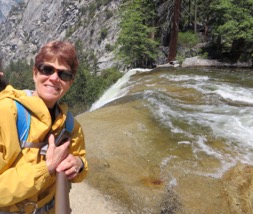3
Learning Objectives
- Explain how various disciplines understand the factors that impede or empower children’s capacity and potential.
- Describe how the free will and agency of children are determined.
- Examine if adults consider children’s own perspectives.
- Analyze adults’ beliefs about childhood enable or hinder children’s agency, will, logic, or reason.
In our definitions of children from the discussion of Chapter 1, how did we consider the child’s voice? How do children demonstrate free will or agency? What cultural structures support or hinder childhood? This week we will explore:
- How do various disciplines understand the factors that impede or empower children’s capacity and potential?
- How are the free will and agency of children determined? Are children’s own perspectives considered?
- Do notions about childhood enable or hinder children’s agency?
Terms and Definitions
Important concepts to look for in this chapter:
- Agency: The capacity of individuals to act independently and to make their own free choices.
- Best Interest: The standard for decision-making related to children and their UNCRC rights.
- Child-focused Research
- Children’s voices: The process if allowing children to articulate their views on matters that concern them.
- Family: A group of people of different generations who have been or are related by marriage and share kinship ties. A child friendly definition is people that live together who love and care for each other.
- Global Childhood: Children in different parts of the world share similar experiences of childhood.
- Nature & Nurture: The dance of the impact of nature (genetic predisposition) and nurture (social, environmental and child-rearing influences).
- Needs: Something that is necessary
- Neglect: Failure by a caretaker, either deliberately or through negligence or inability to take those actions necessary to provide a child with minimally adequate food, clothing, shelter, medical care, supervision, emotional stability and growth, or other essential care; provided, however, that such inability is not due solely to inadequate economic resources or solely to the existence of a handicapping condition. This definition is not dependent upon location (i.e., neglect can occur while the child is in an out-of-home setting).
- Protection: Of children by the government from deliberate or inadvertent harm, most usually in the context of family relations. In MA, the Department of Children and Families protects children from abuse and neglect and, in partnership with families and communities, ensure children are able to grow and thrive in a safe and nurturing environment.
- Resilience: process of adapting well in the face of adversity, trauma, tragedy, threats, or even significant sources of stress — such as family and relationship problems, serious health problems, or workplace and financial stressors. It means “bouncing back” from difficult experiences. (American Psychological Association)
- Rights as defined by the UNCRC: The United Nations Convention on the Rights of the Child is a comprehensive, internationally binding agreement on the rights of children, which was adopted by the United Nations General Assembly in 1989. It is the most widely ratified human rights treaty in history: all countries have ratified it with the exception of the United States of America and Somalia.
- Vulnerability: At risk from harm and in need of protection.
Historically
As you read Mayhew’s The Watercress Girl examines how the historical views of children provide a contrast to modern views. The introductory portion of Mayhew’s article addresses his expectations of childhood and the assumptions he makes of the readers’ expectations. He describes the girl and how he hopes to communicate with her about childhood. The shock factor of the article and his revelations on the conditions of the poor relies upon this introduction. In order to help promote social change, Mayhew explains what people commonly believe childhood to be and through the use of the Watercress girl’s voice, he slowly addresses assumptions. How does reading this article influence your thinking about children?
Legal definitions of childhood emerged and changed over time. The United Nations Convention on the Rights of the Child, or UNCRC is the most complete statement of children’s rights ever produced and is the most widely-ratified international human rights treaty in history. We will use the document frequently for the remainder of the course. You can learn more about the document at the link provided in Terms and Definitions. Please read and download the 2 pdf files (full text and a child-friendly summary available on Blackboard) which are the 54 articles that cover all aspects of a child’s life and set out the civil, political, economic, social and cultural rights that all children everywhere are entitled to. The document explains how adults and governments should work together to make sure all children enjoy all of their rights. The Convention changed the way children are viewed and treated – as human beings with a distinct set of rights instead of as passive objects of care and charity. What are your thoughts about the UNCRC? What is necessary for all children?
Agency and Structure
What does it mean to live in a globalized world? Think about the movement of people, beginning with Columbus arriving in the new world. Consider how contemporary forces of global interconnectedness and how communications make this connectedness possible. How might children be impacted by all the movements? Does the movement of people impact health care, ideas, language, and/or food? For example, where did the ingredients from your breakfast come from? To learn more, see an online magazine that illustrates global connections: How are we connected?
In social science, agency is the capacity of individuals to act independently and to make their own free choices. By contrast, the structure is factors of influence, such as social class, religion, gender, ethnicity, and customs, that determine or limit an individual and their decisions. If you have agency what does that mean?
Children haven’t been given many opportunities to be agents and agency is culturally determined. We can’t always act on our free will. In studying children, researchers primarily focus on structure or environmental influences. There is a relationship between structure and agency which social scientists are interested in studying.
As you watch the film clip 3C’s Children and Community for Change: Are you seeing structure or agency? Are children a minority with limited power and privilege? Should children have a voice? How do you hear children’s voices?
Summary
This week you explored how various disciplines understand the factors that impede or empower children’s capacity and potential. You examined how the free will and agency of children are determined. It is helpful to look at childhood from a variety of angles. A student shared: The experience of eating with a family from India really made me think of how a child must feel at school, when all her peers are looking at her with a puzzled look as they all eat with forks during lunch and she doesn’t. The whole experience really allowed me to become more accepting and respectful of other’s cultures and traditions!
Look at my photos of a waterfall and how it looks different depending on where and how I viewed it. The same is true of studying childhood with an interdisciplinary focus.



As you viewed 3C’s Children and Community for Change: did you feel like this former student, We often don’t listen to children as much as we should and they do have a lot to say? Did you see structure or agency? Are children a minority with limited power and privilege? Should children have a voice? How do you hear children’s voices in your daily life?
In the next 2 chapters, we will look more closely at influences on childhood.
After reading this chapter and completing the activities you should be able to
- Explain how various disciplines understand the factors that impede or empower children’s capacity and potential as seen in discussions and in the project proposal.
- Describe how the free will and agency of children are determined as seen in the discussion.
- Examine if adults consider children’s own perspectives as seen in the discussion.
- Analyze adults’ beliefs about childhood enable or hinder children’s agency, will, logic, or reason as seen in the discussion.
